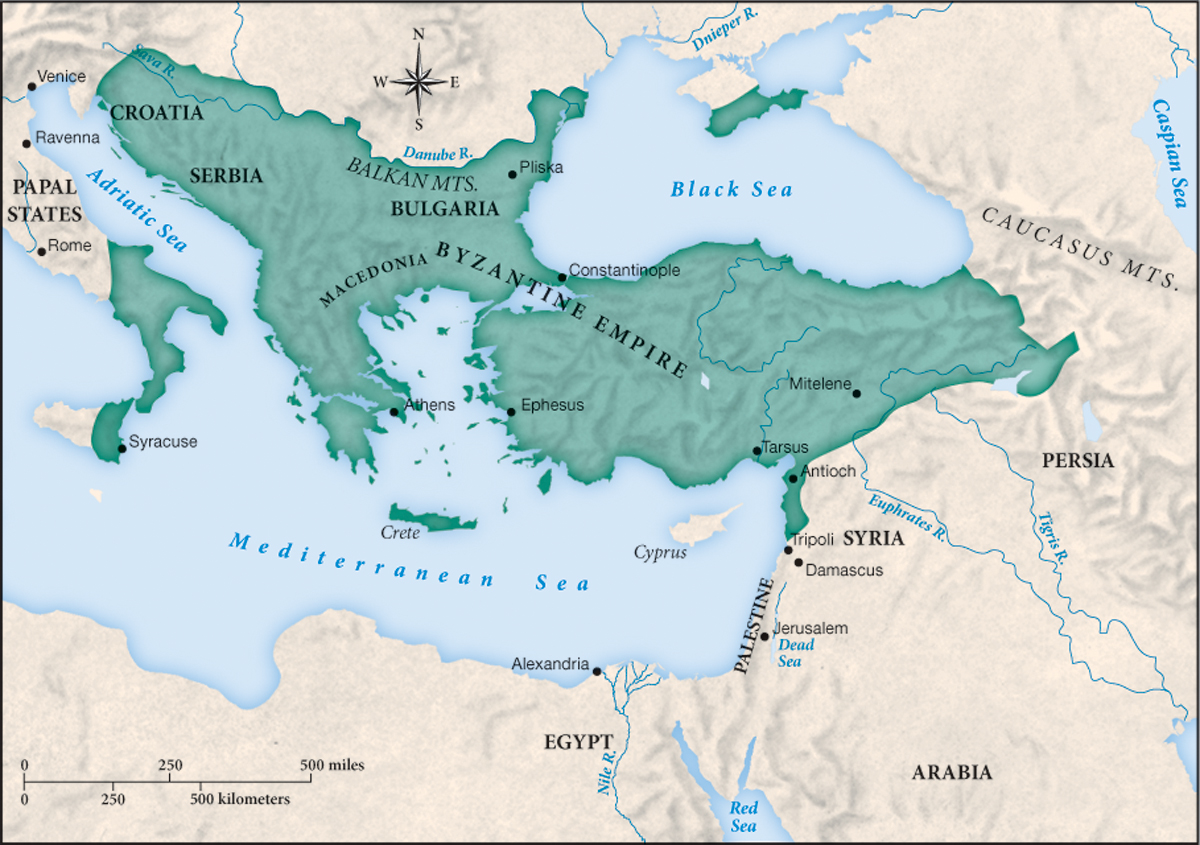Imperial Power
Imperial Power
While the themes, with their territorial military organization (See “New Military and Cultural Forms” in Chapter 8), took care of attacks on Byzantine territory, tagmata—new mobile armies made up of the best troops—moved aggressively outward, beginning around 850. By 1025, the Byzantine Empire extended from the Danube in the north to the Euphrates in the south (Map 9.1).

Military victories gave new prestige and wealth to the army and to the imperial court. The Byzantine emperors drew revenues from vast and growing imperial estates. They could demand services and money from the general population at will, and they used their wealth to create a lavish court culture, surrounding themselves with servants, slaves, family members, and civil servants. From their powerful position, the emperors negotiated with other rulers, exchanging ambassadors and receiving and entertaining diplomats with elaborate ceremonies to express the serious, sacred, concentrated power of imperial majesty.
Some of the emperors’ wealth derived from a prosperous agricultural economy organized for trade. Byzantine commerce depended on a careful balance of state regulation and individual enterprise. The emperor controlled craft and commercial guilds, while entrepreneurs organized most of the markets held throughout the empire. Foreign merchants were welcomed, but because international trade intertwined with foreign policy, the Byzantine government insisted on controlling it, issuing privileges to certain “nations” (as the Venetians, Genoese, and Jews, among others, were called), regulating the fees they were obliged to pay and the services they had to render.
The emperors also negotiated privileges for their own traders in foreign lands. Byzantine merchants were guaranteed protection in Syria, for example, while the two governments split the income on sales taxes. Thus, Byzantine trade flourished in the Middle East and, thanks to Venetian intermediaries, with western Europe. Equally significant was trade to the north; from the conquerors of the area around the outpost of Kiev, known as the Kievan Rus, the Byzantines imported furs, slaves, wax, and honey.